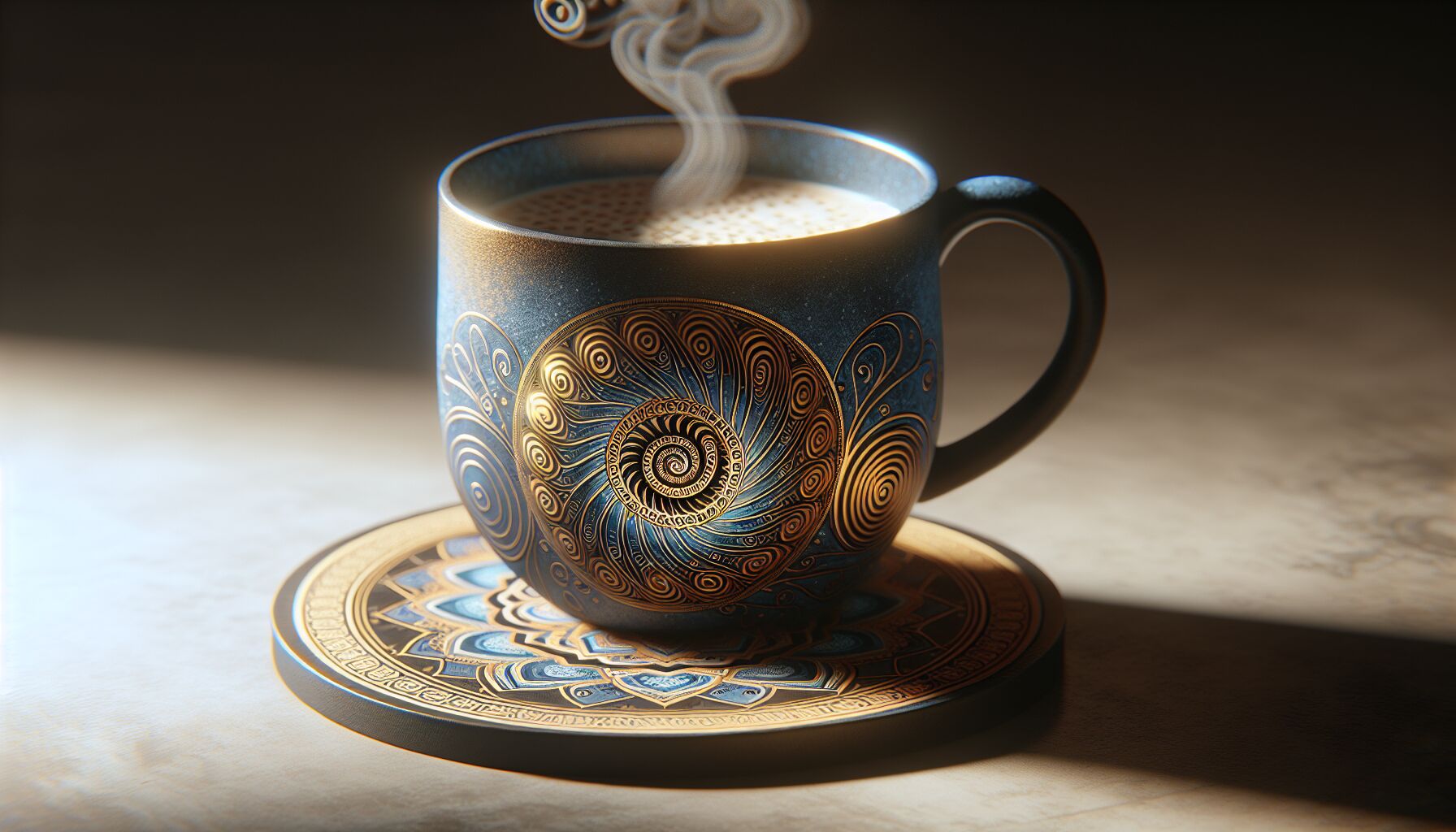 Sacred geometry has long been a point where science meets mysticism, inviting us to ponder the dance between form and the cosmos. At the heart of this concept are universal patterns—those elemental shapes that seem to repeat themselves in everything from a simple flower to the spiraling galaxies overhead. These patterns aren’t just whimsical or decorative; they reflect a divine order, guiding energy and intention in ways we might not consciously recognize.
Sacred geometry has long been a point where science meets mysticism, inviting us to ponder the dance between form and the cosmos. At the heart of this concept are universal patterns—those elemental shapes that seem to repeat themselves in everything from a simple flower to the spiraling galaxies overhead. These patterns aren’t just whimsical or decorative; they reflect a divine order, guiding energy and intention in ways we might not consciously recognize.
Take a stroll through nature, and you’ll see these sacred forms echoed in the symmetrical beauty of a sunflower or the complex fractals of a snowy morning. Mathematicians and dreamers alike have noted how these patterns weave through our world, forming a tapestry of interconnectedness. “Geometry is the archetype of the beauty of the world,” once mused Johannes Kepler, capturing this ancient truth in a single line.
But why does this matter to us, grounded beings scurrying about in our day-to-day? The old masters believed these shapes hold the key to balancing our paths, aligning body and spirit with the cosmic rhythms we often neglect. It’s as if they’re whispering secrets we’ve known all along but somehow forgotten.
In practical terms, understanding these forms can enrich our perception and deepen our self-awareness. They can turn a mundane room into a sanctuary or transform quiet moments into meditative journeys. By recognizing the sacred in the simple, the familiar becomes a stepping stone to insight, blurring the lines between the material and the metaphysical.
So, we must ask ourselves: How often do we engage with these sacred symbols? How do the curves of a circle, the angles of a triangle, or the infinite spirals speak to us? By tuning in, we invite harmony—a balance not just in structure, but in the very essence of being.
Relating to the very fabric of existence, sacred geometry beckons us to see beyond the obvious, to feel the pulse of the universe within a tendril of ivy, or the perfection of a honeybee’s comb. Let these forms be a gentle reminder of our place within the great expanse, an invitation to see the world with fresh eyes, and to reconnect with the simplicity and profundity of life’s patterns.
For those eager to delve deeper, sacred geometry offers a path rich with potential, bridging past wisdom and present awareness. It’s not about simply understanding shapes—it’s about allowing those shapes to resonate within, to lead us toward authenticity and balance. This ancient wisdom can be a compass, pointing to truths that are at once timeless and ever relevant.
the impact of shapes on personal energy
Our lives are woven with patterns—from the rhythmic pulsing of our hearts to the gently curving silhouettes that make up our living spaces. These patterns, deeply rooted in sacred geometry, do much more than fill our surroundings with beauty. They wield a transformative power over our personal energy, shaping not just how we feel, but how we interact with the world around us.
Ever notice how stepping into a room with high ceilings and spacious windows can lift your spirits? Or how the embrace of a cozy nook can make you feel grounded and safe? These reactions have a lot to do with the geometric shapes that subtly dictate the flow of energy around us. Even in ancient times, societies harnessed this knowledge—think of the majestic pyramids of Egypt or the intricate mandalas of Hindu and Buddhist traditions.
It turns out that shapes are far more than passive backdrops; they’re active influencers of the energies we emit and absorb. According to Mark Devlin, “Energy flows where attention goes.” So, focusing on a geometric form can, in some ways, shape our mood and mindset. Imagine immersing yourself in the endless complexities of a snowflake; its perfect symmetry isn’t just a spectacle—it’s an interaction between nature and perfection.
Let’s consider circles for a moment. These universal patterns of no beginning and no end symbolize eternity and unity. Ever sat in a circle with friends around a campfire? That shape fosters a sense of equality and connection, as every participant shares the same distance and perspective from the center. It underscores our shared humanity and interconnected destinies.
Meanwhile, triangles are seen as symbols of stability, as they distribute weight and energy equally across all sides. It’s why they’re the backbone of structures that need to be steadfast and unyielding. Pyramids, for instance, aren’t just historical treasures; they are manifestations of divine order, channeling cosmic energy in a uniquely powerful way.
Every shape communicates something different—squares speak of structure and order, inviting a harmony between the earthly and the ethereal. Spirals mimic the growth patterns of nature, offering a visual reminder of life’s ever-unfolding journey. Next time you see patterns in the petals of a flower or a spiraled shell washed up on the beach, pause and consider: What is it quietly saying to you?
Playing with these forms in your environment—whether through the careful arrangement of furniture, the art that adorns your walls, or even the jewelry you wear—can be a subtle yet profound way to invite positivity and peace into your life. This isn’t some distant mysticism but practical wisdom, hidden in plain sight.
In an era where much of our environment is shaped by functionality and efficiency, reintroducing these sacred geometric shapes can bring balance to our bustling lives. Isn’t it strange how the simplest forms bring the greatest sense of calm and clarity? By reconciling the spiritual resonance of sacred geometry with the practicalities of daily living, we realign with a deeper, more harmonious rhythm—a pathway to rejuvenation that resonates with both our inner selves and the expansive universe around us.
integrating sacred geometry into daily life
 Integrating sacred geometry into your daily routine is simpler than you might think and deeply enriching—a way to reconnect with those ancient universal patterns that shape everything from galaxies to grains of sand. It’s about inviting these timeless forms into your life and letting them whisper their secrets of harmony and balance.
Integrating sacred geometry into your daily routine is simpler than you might think and deeply enriching—a way to reconnect with those ancient universal patterns that shape everything from galaxies to grains of sand. It’s about inviting these timeless forms into your life and letting them whisper their secrets of harmony and balance.
Think about your morning coffee. How would it feel if the mug you reach for isn’t just functional but also a visual symphony of sacred shapes? A mug with a spiral motif might remind you of your own growth, winding gently towards the day ahead. Or perhaps the mandala design on your coaster reflects the balance you strive to achieve, each layer inviting contemplation as you sip your brew.
But here’s the kicker—not everyone’s drawn to the same forms. Some may feel grounded by the stability of squares and rectangles. Imagine rearranging your workspace or living area to echo these shapes; your desk placed neatly against a wall or your couch lined parallel to your coffee table. This architectural harmony isn’t just about aesthetics. It nurtures a sense of divine order, subtly enhancing productivity and peace.
On the flip side, curves and circles bring a sense of endless flow. How could they enhance your environment? Picture a round mirror on the wall, endlessly reflecting light and energy, or a circular rug forming a natural gathering space in your home. These shapes gently defy straight edges, inviting warmth and connection.
Remember those statements about geometry in nature? Consider a walk in a garden or park—spaces that naturally weave geometric patterns into their very fabric. These places are more than just pretty backdrops; they’re living experiences of sacred forms. Every leaf, petal, and pebble reflect the same profound order that governs the cosmos. What if you planted a garden bed in a spiral or laid out stones in a sacred pattern? Would tending these geometric shapes bear a different kind of fruit in mind and soul?
For the creative spirits, consider crafting with sacred geometry in mind. A crocheted blanket with floral patterns inspired by fractals or a painting reimagining the cosmos might serve as a daily meditative practice. Your artistry becomes a living testament to the mysticism infused in geometric harmony.
Even your wardrobe can join in the dance. Jewelry inspired by sacred forms—like a pendant shaped into a dodecahedron or earrings mimicking the Fibonacci sequence—anchors your intentions, like subtle tokens of awareness amidst the everyday hustle. Such pieces don’t just accessorize; they connect, remind, and inspire.
And what about technology, you ask? Even our digital realms reflect these shapes. The swirling mandala wallpapers on a smartphone screen, or the logo that greets you on your favorite app, tap into this ancient wisdom, whether consciously designed or not. Imagine a virtual space that doesn’t just function but engages with the sacred symbols, nodding to the mysterious dance of numbers and forms.
Incorporating sacred geometry into life doesn’t demand a complete overhaul. It suggests a shift in awareness, an invitation to see your world as a canvas where universal patterns paint a picture of harmony and potential. It’s a gentle reminder from the universe: You’re part of a grand design, an infinite tapestry of simplicity and complexity. As Lao Tzu wisely noted, “The Tao is about returning.” Perhaps in these sacred forms, we’re drawn back to the path we’re destined to walk, feeling our way home to ourselves and the cosmos.
 DS Haven In Light Of Things
DS Haven In Light Of Things






